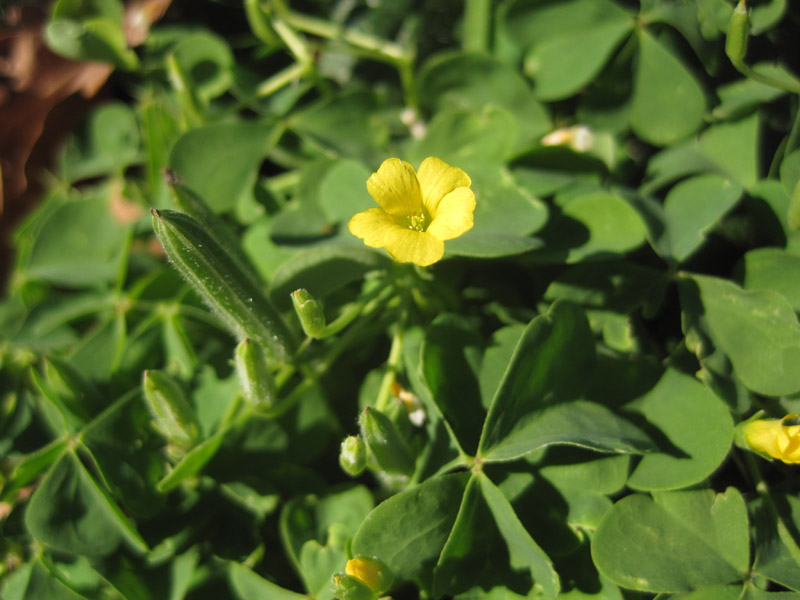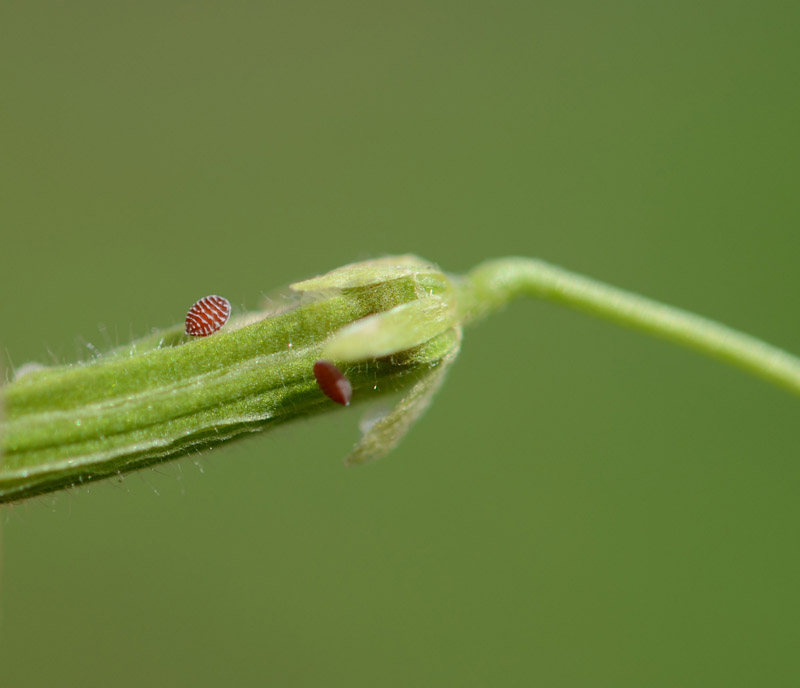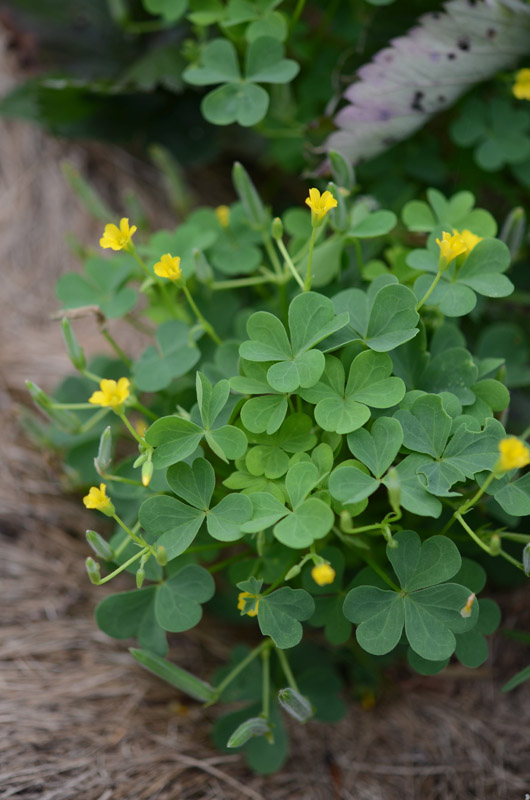Plant of the Week
 Oxalis stricta range map. USDA PLANTS Database.
Oxalis stricta range map. USDA PLANTS Database.
 A. Flower close up. Photo by David D. Taylor.
A. Flower close up. Photo by David D. Taylor.
 B. Leaf partially folded. Photo by David D. Taylor.
B. Leaf partially folded. Photo by David D. Taylor.
 C. Seed and part of capsule. Photo by David D. Taylor.
C. Seed and part of capsule. Photo by David D. Taylor.
Common Yellow Wood Sorrel (Oxalis stricta)
By David Taylor
Common yellow wood sorrel is a member of the Oxalidaceae, the Wood Sorrel family. Species in this family are small trees to small herbs. Other plants in the family include purple shamrocks (Oxalis triangularis) a common houseplant, and violet wood sorrel (Oxalis violacea). The family is mostly found in temperate regions.
This perennial herb has a long taproot and produces multiple stems from the base which may grow upright or sprawl upon the ground, but do not root. Stems can grow up to 23 centimeters (9 inches) tall, though they are usually shorter. Stems may be smooth or slightly hairy. The light green leaves are alternate (but often bunched together appearing as opposite), palmately compound and resemble clover leaves. Each of the three heart-shaped leaflets is folded along the midvein (see photo B). The leaves are 2 to 2.5 centimeters (3/4 to 1 inches) across. Yellow flowers are borne in clusters of 1 to 2 at the end of long stalks (peduncles), which hold the flowers above the leaves. Flowers are yellow with five petals and about 1 centimeters (3/8 inches) high. The fruit is a hairy, ribbed capsule 2 to 2.5 centimeters (3/4 to 1 inches) long. The capsules are upright from a bent stalk (see photo D). The capsules when ripe open explosively throwing tiny brown seeds up to a meter (39 inches) or more away. The seeds of this species have white ridges on the surface (see photo C).
Common yellow wood sorrel grows in a variety of habitats from open forest to fields and gardens. It can be a difficult garden weed. It is reported from all the contiguous United States except Oregon, California, Nevada, and Utah, but likely occurs in those states as well. It is also reported from Newfoundland Labrador west to Manitoba, and British Columbia.
This species may flower throughout the year depending on the part of the country in which it is found. It most commonly flowers spring to fall. Bees, ants and butterflies visit the flowers. The leaves fold at night and open again during the day. The plant contains oxalic acid which gives it a sharp taste. Some people use the leaves in salads, but consuming large amounts may contribute to kidney stones.
The native status of this plant is debated. Many sources consider it native and others consider it introduced. Confusion in scientific names over the years may have contributed to this uncertainty. This plant is similar to and easily confused with Oxalis dillenii, another species with uncertain native status, and Oxalis corniculata, an introduced species. The latter two species may also become weedy in disturbed areas such as roadsides, fields and gardens.



